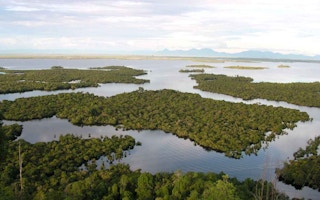The essence of science is a willingness to question assumed truths by objectively and transparently testing them.
As a scientist I would never claim to know the truth — how arrogant would that be? — but I am happy to give it my best shot, based on the best available data and analysis, and stick to that “truth” until someone else proves me wrong. No drama, no hard feelings.
What has baffled me, however, is that many decisions and policies made in Indonesia regarding land use seem to ignore credible research and science — acting as if these simply do not exist. As a result of this, a number of environmental disasters have occurred across the archipelago, which could have been prevented with better science-based planning.
I specifically refer to the apparently random way that land-use decisions are made. Many people, including myself, are really not sure what informs whether or not a piece of land will be allocated to, let’s say, an oil palm plantation or whether it stays under forest cover. One may assume that the decision-making is often based on personal connections between business and political leaders. And such “behind closed doors” deals are by necessity opaque and are not supported by broader public, let alone, scientific consultation.
If this is the case, Indonesia is making costly mistakes in its land-use planning. These costs are especially high in environmentally sensitive areas. It is easy to ignore those costs, because they tend to accrue over longer time frames, whereas the revenues from development come in much quicker.
“
So the benefits accrue to a small group of people who own plantations, politically support them, or those who find employment on the plantations. Quick and rich wins for a few lucky souls. But the costs accrue over long time frames and will ultimately affect millions
For example, turning the peat swamp forests around the Danau Sentarum National Park in West Kalimantan into oil palm plantations will provide the companies working there with solid revenues in about four years after the forests have been cut down.
The environmental impacts, however, will be felt only over much longer time frames. They will be significant, largely irreversible, and affecting hundreds of thousands of people. This includes much-reduced revenues from fish that would normally breed in peat swamps. It also includes the increased severity and frequency of floods because of the reduced rainfall absorption in drained peat lands — the impacts of which will be felt far downstream in major towns such as Sintang and the capital Pontianak. Another one is the increased likelihood of fire in drained peats, which can have major environmental impacts, although with prevailing dry season winds blowing north the smog will mostly affect Malaysia and Singapore so that doesn’t really matter, right? And, oh yes, the developments will kill a few hundred orangutans — gone forever.
So the benefits accrue to a small group of people who own plantations, politically support them, or those who find employment on the plantations. Quick and rich wins for a few lucky souls. But the costs accrue over long time frames and will ultimately affect millions.
The scientific side of the problem is that we can fairly accurately quantify the net revenues from oil palm development. But doing this is much harder for the costs. After all, how do you measure the economic impact of the annual floods in Kalimantan that displace 500,000 from their homes, as our studies show?
Or what does it really mean if millions of people in the Southeast Asian region walk around in thick, acrid smoke because of the mismanagement of Indonesian lands? Presumably, politicians at central level in Jakarta would act a lot more decisively on the issue of land fires if the smog blew towards Indonesia’s capital city and there were large crowds blocking Jalan Sudirman to voice their objections.
The political side of the problem is that Indonesian land-use decision-making clearly does not make enough use of the science that is available, or even use the precautionary principle when the science isn’t yet 100 per cent clear.
As to why, I have a few guesses. First, there are the earlier mentioned vested interests in decision-making that would rather not use rational analysis of societal cost and benefits. Second, home-grown Indonesian science — as shown by many data sources — is still weak and has to mature further to be able to stand up to public scrutiny as credible and reliable. Third, the existing knowledge may not meet the dynamic demands of the Indonesian political decision-making process. Scientists generally (both Indonesian and foreign) need to get much better at understanding what kind of information decision-makers really need and how to make it palatable.
The bottom line for Indonesian political decision-makers is to 1) improve the nation’s educational standards, 2) listen more to scientists, and 3) clearly articulate the science they need to better inform their decision-making.
Sticking our heads in the sand and acting like rational objective thinking and solid scientific analysis are not worth paying attention to might be a pleasant way to proceed, but it is a pretty irresponsible way to develop the country’s economy and decide how to make best use of its vast natural resources.
Ignoring the science is a major cost for Indonesia.
Erik Meijaard coordinates the Borneo Futures — Science for Change program from Jakarta. This post originally appeared in The Jakarta Globe.










